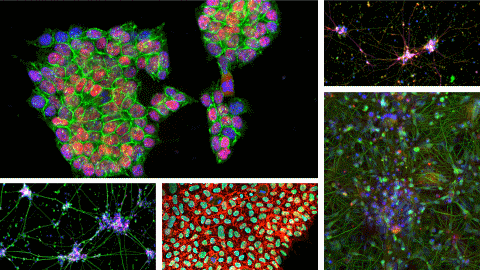Study reveals how deadly tick disease spreads
Findings from a new study are providing important insights into the spread of Rocky Mountain spotted fever, which is transmitted from dogs to people through ticks. The new data are being used to create models that could help predict, and possibly prevent, future outbreaks.
If not treated within the first five days, Rocky Mountain spotted fever can cause serious organ damage in humans that may lead to death. It can cause serious illness in dogs if not treated during the early stages.
Although the disease is usually carried by the American dog tick or Rocky Mountain wood tick, the brown dog tick was identified as a new vector — or carrier — during a 2003 outbreak in Arizona. Since then, the Rickettsia rickettsii bacteria that causes the disease has spread to brown dog ticks across the American Southwest and parts of Mexico. Although the tick is present across the entire U.S., only those in Arizona and the surrounding regions are known to carry R. rickettsii.

To better understand why the brown dog tick emerged as a new vector, researchers led by John VandenBrooks, PhD, from Midwestern University in Glendale, Ariz., performed a detailed analysis of brown dog ticks, canine and human infections, and climatic data in Arizona, New Mexico, California and Mexico.
“Our results indicate that the spread of Rocky Mountain spotted fever involves a combination of factors and that the vectoring capacity of the brown dog tick may be spreading outside of the region,” said Kayla Allwardt, a veterinary student in the VandenBrooks lab. “This could put a much larger portion of the country at risk. Identifying the highest risk regions is essential to protecting canine and human health.”
Allwardt will co-present the new research with veterinary student Nicolette Roe at the American Society for Biochemistry and Molecular Biology annual meeting during the Experimental Biology (EB) 2022 meeting, to be held April 2–5 in Philadelphia.
To carry out the new study, the research team applied what the Centers for Disease Control and Prevention call a One Health approach, which recognizes the interconnection between people, animals and the environment. The researchers collected ticks and dog serum samples from 25 sites for genetic analysis and mapped relevant environmental factors.
“We found three genetically distinct populations of ticks, which vary in the percentage of ticks that carry the R. rickettsii bacteria,” said Roe. “These differences are a major contributor to the variation in Rocky Mountain spotted fever cases we see across the region.”
They also found that of the 16 U.S. counties surveyed, two were at high risk for an outbreak, 10 were at medium risk and only four were at low risk. Importantly, they also found high rates of Rocky Mountain spotted fever infection in dogs in areas where no human cases had been reported.
The researchers incorporated the data into a model that can be used to determine where new outbreaks might occur. This could allow resources such as tick collars or prevention kits to be sent to critical areas. They have also been working to incorporate the data into a model that can determine whether a canine vaccine, which would need to be developed, could feasibly stop future spread.
The investigators plan to expand their research to examine more areas across the U.S. to determine how far infected brown dog ticks have spread. This data can then be used to develop more complete models to help predict and prevent future outbreaks.
Kayla Allwardt and Nicolette Roe will present this research from 12:30–1:45 p.m. Tuesday, April 5, in Exhibit/Poster Hall A–B, Pennsylvania Convention Center (Poster Board Number A222) (abstract).
Enjoy reading ASBMB Today?
Become a member to receive the print edition four times a year and the digital edition monthly.
Learn moreGet the latest from ASBMB Today
Enter your email address, and we’ll send you a weekly email with recent articles, interviews and more.
Latest in Science
Science highlights or most popular articles

Melissa Moore to speak at ASBMB 2025
Richard Silverman and Melissa Moore are the featured speakers at the ASBMB annual meeting to be held April 12-15 in Chicago.

A new kind of stem cell is revolutionizing regenerative medicine
Induced pluripotent stem cells are paving the way for personalized treatments to diabetes, vision loss and more. However, scientists still face hurdles such as strict regulations, scalability, cell longevity and immune rejection.

Engineering the future with synthetic biology
Learn about the ASBMB 2025 symposium on synthetic biology, featuring applications to better human and environmental health.

Scientists find bacterial ‘Achilles’ heel’ to combat antibiotic resistance
Alejandro Vila, an ASBMB Breakthroughs speaker, discussed his work on metallo-β-lactamase enzymes and their dependence on zinc.

Host vs. pathogen and the molecular arms race
Learn about the ASBMB 2025 symposium on host–pathogen interactions, to be held Sunday, April 13 at 1:50 p.m.

Richard Silverman to speak at ASBMB 2025
Richard Silverman and Melissa Moore are the featured speakers at the ASBMB annual meeting to be held April 12-15 in Chicago.

